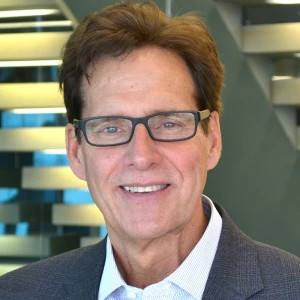This article is part of an ongoing series that describes the concept of “Sustainable Business Model Innovation” (SBM-I) and how companies are putting it to use.
Throughout the pandemic, companies worked to rapidly adjust their business models to be more resilient and competitive in the face of uncertain economic recovery. As companies now build back, how can they assess which business model changes will enable the company to become genuinely more resilient and sustainable over time?
We believe our insights from researching Sustainable Business Model Innovation (SBM-I) can help answer that question. Crossing all industries and geographies, our research analyzed more than 100 business models through which companies delivered both business value and environmental and societal benefits. We tested each business model against nine attributes to gauge its robustness and resilience, attributes identified through BCG's experience in helping companies create strategies and business models that yield sustainable business advantage.
The Nine Attributes of Sustainable Business Models
Below we discuss how various attributes fundamentally underpin business advantage and illustrate how they add to business resilience and sustainability, using examples of interesting companies that are pursuing sustainable business model innovations. In general, the better the business model scores on the nine attributes shown in the spider diagram of the exhibit, “Nine Attributes to Assess Sustainable Business Advantage,” the more likely the company is well-positioned for resilience, sustainability, and competitive advantage over time.
The first five attributes in the list below can apply to many business models independent of their environmental or societal impacts, at least until their externalities result in new regulatory constraints or stakeholder backlash. However, it is the addition of attributes six through nine that forms the core of truly sustainable business models. And it is these attributes that are becoming increasingly important for all businesses to remain resilient and extend their advantage in the future.
1. Scales effectively without increasing risks or diminishing returns. The business model allows the company to grow without reducing its capacity for value creation and profitability. In the case of SBM-I initiatives, as the business scales, so do the environmental and societal benefits it creates, without diminishing the economic returns.
For instance, since its launch in 1993, Jeanologia, which develops eco-friendly denim finishing technologies, has continuously broadened its operations. Many manufacturers and brands became customers as they grew more constrained in the amounts of energy, water, and chemicals they could use. In 2018, Jeanologia's technology was used in the production of 35% of the 5 billion jeans produced annually by the industry, saving more than 10.6 million cubic meters of water, an amount equivalent to the water supply for 584,000 people for a year.
2. Increases differentiation and competitiveness. The business model delivers product features and operational advantages that make its offerings notably stand out from competitors.
Lush has created an iconic cosmetics brand based on unique product formulations and formats (for example, vegan, packaging-free, and ethical cosmetics that stand out thanks to their vibrant colors), enabled by a robust Fair Trade-certified supply network. It operates factories in Toronto and Vancouver, where products are made by hand, and it trains sales representatives to deliver a distinctive, education-focused store experience.
3. Reduces the potential for commoditization. The business model enables the company to make its products and the efficiencies and effectiveness of its operating processes difficult for competitors to replicate over time, thereby providing an underpinning for sustainable advantage.
Schneider Electric's EcoStruxure platform leverages a unique combination of digital, IoT, analytics, and applications to deliver a powerful energy management and automation solution that becomes “smarter” as data and machine learning accumulate over time. Launched in 2007, EcoStruxure is (as of 2018) used across more than 500,000 installations. It is the foundation of a €27 billion business, helping customers save, on average, 20% of their CO2 emissions. (Some save as much as 50%.) In one fiscal year, from 2018 to 2019, this added up to a total savings of 90 million metric tons of CO2, equivalent to taking almost 20 million cars off the road for an entire year.
4. Uses network effects to achieve growth and multiply the value. The business model builds itself into the networks of the broader industry and customer ecosystem, enabling growth in the network to pull through growth for the business. For example, it may involve a distribution model—potentially in partnership with other companies—that quickly and cost-effectively accesses volumes of customers. The company may also become integral to the operation of a network, such as one providing health care, financial services, or telecommunications. As demand grows for the network, so does demand for the company's products and services.
Babyl, a subsidiary of Babylon Health UK in Rwanda, signed a ten-year partnership with the Government of Rwanda in February 2020. This partnership enables Babyl to roll out its telehealth platform and services through the government's community-based health insurance scheme, Mutuelle de Santé, and thus multiply its reach. To manage the challenge of a ratio of only 1 doctor to 10,000 inhabitants, Babyl's digital-first model connects and powers a digital health care network, improving the country's quality and speed of care. It has already registered more than 2 million adults (from an overall adult population of 12 million) across 30 districts, and it facilitates more than 3,000 consultations per day.
5. Harnesses business ecosystems for advantage. The business model leverages partnerships and collaborations within the business ecosystem. It does so in a way that strengthens its position and value proposition and shapes the dynamics of markets and stakeholders in ways that play to the company’s strategic objectives.
The Jaza Duka initiative (the name means “fill up your store” in Swahili) was launched in 2017, jointly led by Unilever, Mastercard, and the Kenya Commercial Bank. Combining assets and capabilities across the business ecosystem, Jaza Duka helps micro-retailers digitize their transactions to build a proxy credit history and gain access to credit lines to expand their inventory and businesses. The program has helped 20,000 shopkeepers—of which the majority are women—grow their businesses and improve their livelihoods, which benefits all three companies by boosting revenues and lowering risks. The initiative expanded in 2019 with microinsurance and other rewards to encourage complete and timely orders and repayments from micro-retailers, furthering the social impact and business value of the full system.
6. Remains durable against environmental and societal trends. The business model reduces the constraints and risks that arise from changing environmental constraints and socioeconomic trends. These constraints might materialize in the form of new standards and regulations, supply chain pressures, or changes in consumer and stakeholder attitudes.
Interface evolved its business model over time—redesigning products to improve environmental footprint, developing sustainable sources of inputs (for example, by working with coastal communities to collect and recycle fishing nets into yarn), and setting up take-back and closed-loop recycling programs to turn used plastics into inputs for new carpet tiles. In this way, Interface can maintain its leading position on environmental issues and anticipate or even shape recycling standards and customer demands.
7. Creates environmental and societal benefits material to key stakeholders. The business model creates environmental and societal benefits that can be used for value creation over time. In another article, we explore the holistic sets of benefits that companies should seek to create . As investors, customers, and other stakeholders increasingly scrutinize ESG risks and performance, companies that create environmental and societal benefits through their business model are better positioned to gain advantage by leveraging this trend.
Primark's Sustainable Cotton Program creates environmental and societal benefits across a broad set of dimensions, connecting it to business value drivers. Since 2013, this program has trained cotton farmers in sustainable farming methods to reduce chemical pesticides, fertilizers, and water, helping farmers increase their yield and improve their livelihoods through increased income. In 2017, Primark started to use cotton from the program—which is traceable from farm to store—in its products at no extra cost to the consumer. The company started with one of its most popular lines, women's pajamas. In autumn 2020, Primark increased its number of sustainable cotton products to 60 million items, including denim, T-shirts, nightwear, duvets, and towels. By 2022, the program will equip more than 160,000 farmers with the knowledge and means to grow cotton using more sustainable methods, reflecting Primark's long-term ambition to ensure that all the cotton used in its supply chain is sustainably sourced.
8. Increases returns to shareholders and environmental and societal benefits to stakeholders. The business model is robust in a world of stakeholder capitalism by having a reinforcing cycle of competitive returns on capital and creating benefits to all key stakeholder groups. The business model does not sacrifice returns below what is competitive in the name of creating environmental/societal benefits—nor does it seek returns to the detriment of stakeholders. This positions the company for better long-run risk-adjusted returns.
Royal DSM has partnered with the public sector, international aid agencies, and local NGOs to set up a joint venture called Africa Improved Foods (AIF). This new enterprise tackles nutrition challenges in Rwanda while developing its local supply chain and manufacturing capacity and helping to expand the market for fortified foods. Besides employing 300 skilled factory workers, the venture's 45,000-ton-capacity facility is supplied by over 35,000 farmers. AIF offers Royal DSM a strategic commercial position in Africa and returns profits above the agreed-upon commercial return to the government of Rwanda. The incremental value of the project over 15 years is estimated at $760 million. Finally, society benefits by having access to locally produced, affordable, and nutritious fortified grains and foods.
9. Animates purpose. The business model embodies and operationalizes the company's purpose. This boosts engagement and affinity with employees, customers, investors, and other stakeholders.
Jeanologia articulates a purpose that is more altruistic than being “the best company in the world.” It wants to be “the best company for the world.” Its business model and the resulting environmental impact—in 2018 alone, saving 10.6 million cubic meters of water, equivalent to the water supply for 584,000 people for an entire year—demonstrate and achieve the company's purpose.
A Call to Sustainable Innovation
In everyday practice, companies can use the robustness and resilience framework to determine if their business model provides them with business advantage that is likely to be sustainable over time. It can be used to identify potential vulnerabilities or gaps and to test how additional business model innovations could improve overall performance.
Considering the pandemic, as companies rethink the robustness and resilience of their business models, they should expand their view of the attributes that underpin their business advantage. Business leaders should particularly examine how the business model creates environmental and societal benefits, which are often not explicitly considered as attributes of resilience but are becoming increasingly important.
In a forthcoming article we explore how Sustainable Business Model Innovation can be done through a structured approach to improve and expand the robustness and resilience footprint of any business.










